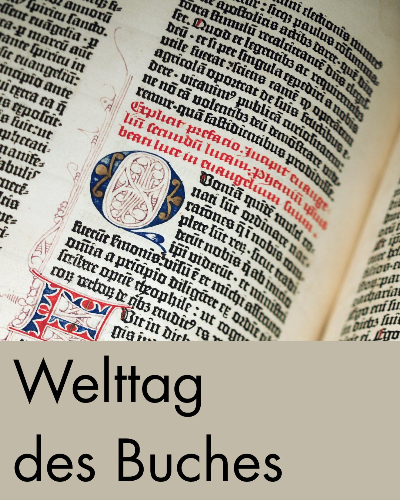
©
Така подія стала можливою саме у Майнці не випадково, адже найбільший син міста — Йоганнес Гутенберг — винахідник літер, преси та друкарського верстата, який змінив хід історії культури та світу книг, народився саме тут. Винайшовши близько 1450 року друкарський верстат із рухомим шрифтом, він здійснив революцію у доступності знань (друк та поширення книг). Завдяки друку ідеї Реформації (зокрема, тези Мартина Лютера) поширилися надзвичайно швидко по всій Європі, книгодрукування дало потужний поштовх розвитку науки та ЗМІ. Друкарі Майнца відзначили 625-ту річницю від дня народження винахідника незвичайною акцією: вони надрукували сторінку Біблії розміром 5 м на 7,2 м, яка є репродукцією першої сторінки Євангелія від Івана з Біблії, створеної у майстерні Гутенберга. Оригінал так званої «Біблії Шакбурга» експонується в Музеї Гутенберга. Формат сторінки визначили найбільші промислові паперові рулони, доступні на ринку. Макет сторінки було створено з дванадцяти дерев'яних друкарських блоків, виготовлених за допомогою комп'ютерного фрезерування. Щоб перенести фарбу на папір, друкарі багаторазово проїжджали по блоках невеликим автомобілем. Гутенбергівська Біблія дотепер вважається одним із найгарніших друкованих видань у світі. У майбутньому гігантський друк планують виставити у соборі Майнца. А цими вихідними на площі Фішторплац у Майнці всі охочі зможуть особисто освоїти друкарську майстерність — містяни крокуватимуть поверх дерев'яного друкарського кліше. Так стартував культурний сезон у Рейнланд-Пфальці.
World's Largest Bible Page Printed in Mainz to Mark Gutenberg's Legacy
In the German city of Mainz, a historic event unfolded as the world’s largest printed Bible page was unveiled, marking the 625th anniversary of Johannes Gutenberg’s birth. This remarkable feat was fittingly carried out in Mainz, the birthplace of the man who revolutionised the world of books, printing, and culture. Gutenberg, born in Mainz, is renowned for inventing the movable-type printing press around 1450, a game-changing innovation that transformed access to knowledge. His invention led to the mass production and distribution of books, facilitating the rapid spread of Reformation ideas—particularly Martin Luther’s theses—across Europe. This momentous development in the history of print spurred the growth of science and the media. To commemorate this milestone, printers in Mainz organised a truly extraordinary event. They produced a Bible page measuring 5 metres by 7.2 metres, which is a reproduction of the first page of the Gospel of John from a Bible created in Gutenberg’s workshop. The original of this so-called “Shuckburgh Bible” is displayed at the Gutenberg Museum in Mainz. The page was printed using the largest available industrial paper rolls on the market, with the template made from twelve wooden printing blocks, crafted through computer-controlled milling. To transfer ink onto the massive sheet, the printers drove a small car over the blocks repeatedly. In a quirky twist, they deliberately left one small section unprinted, resulting in a minor error covering a few words on the finished page. The Gutenberg Bible is still considered one of the most beautiful printed books in the world. In the future, the giant print is set to be displayed in Mainz Cathedral. This weekend, visitors to Fischtorplatz in Mainz will also have the chance to try their hand at the printing process themselves. The city’s residents will walk over the wooden printing block, offering a unique opportunity to engage with the age-old craft. The event marks the official launch of the cultural season in Rhineland-Palatinate.
721